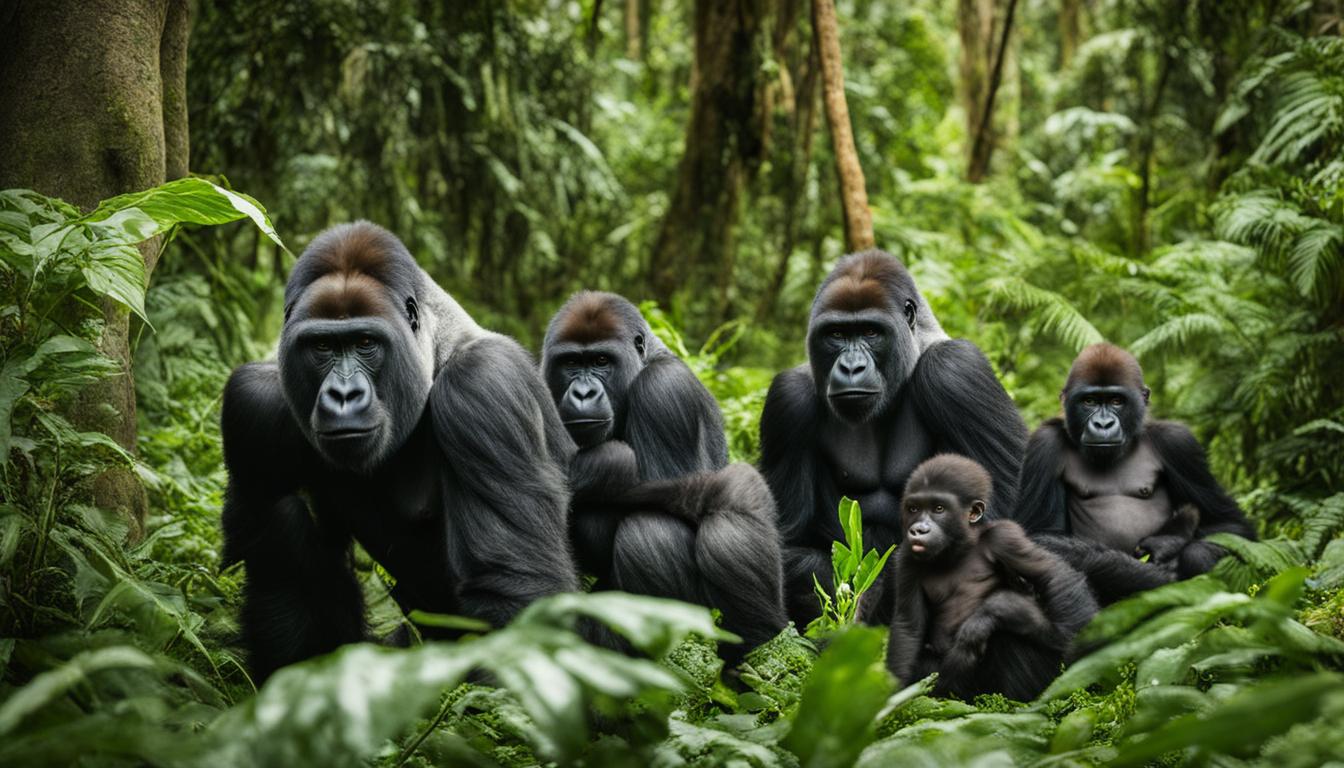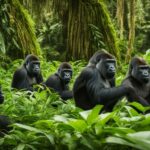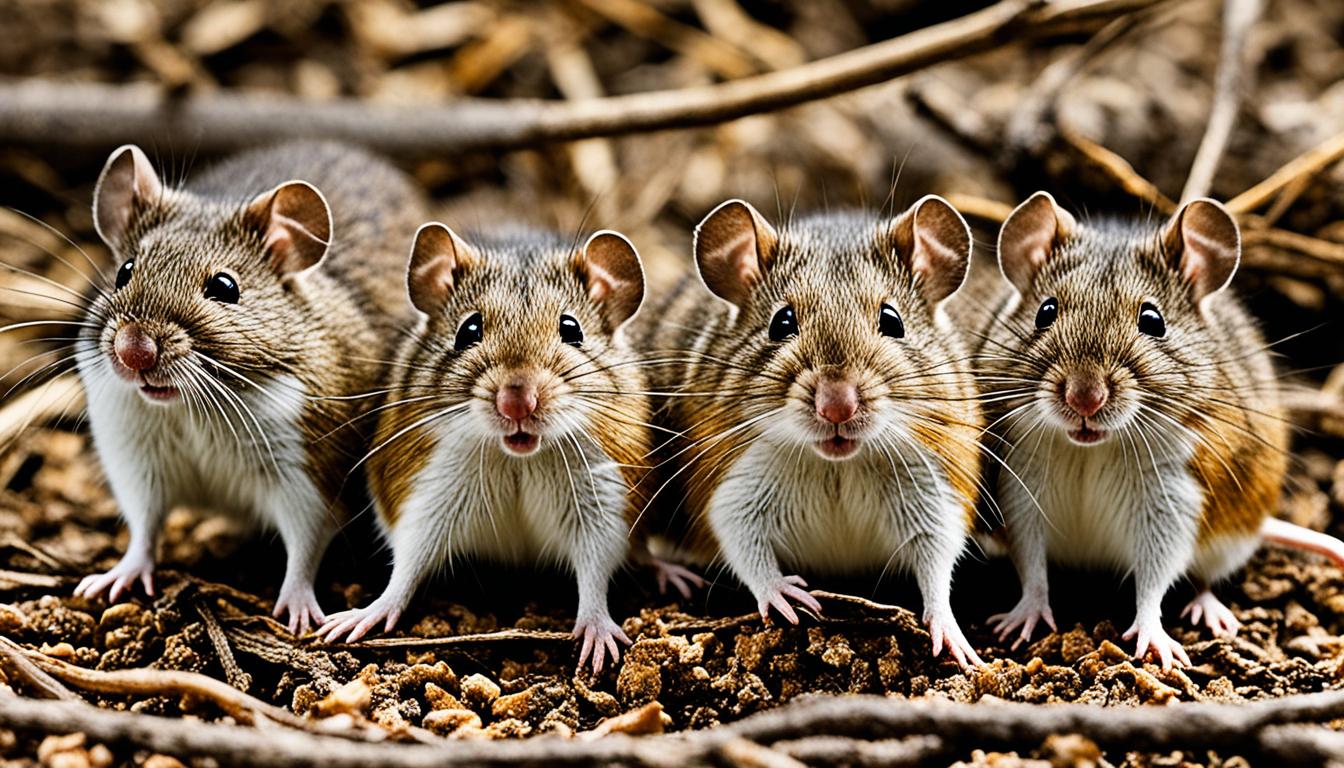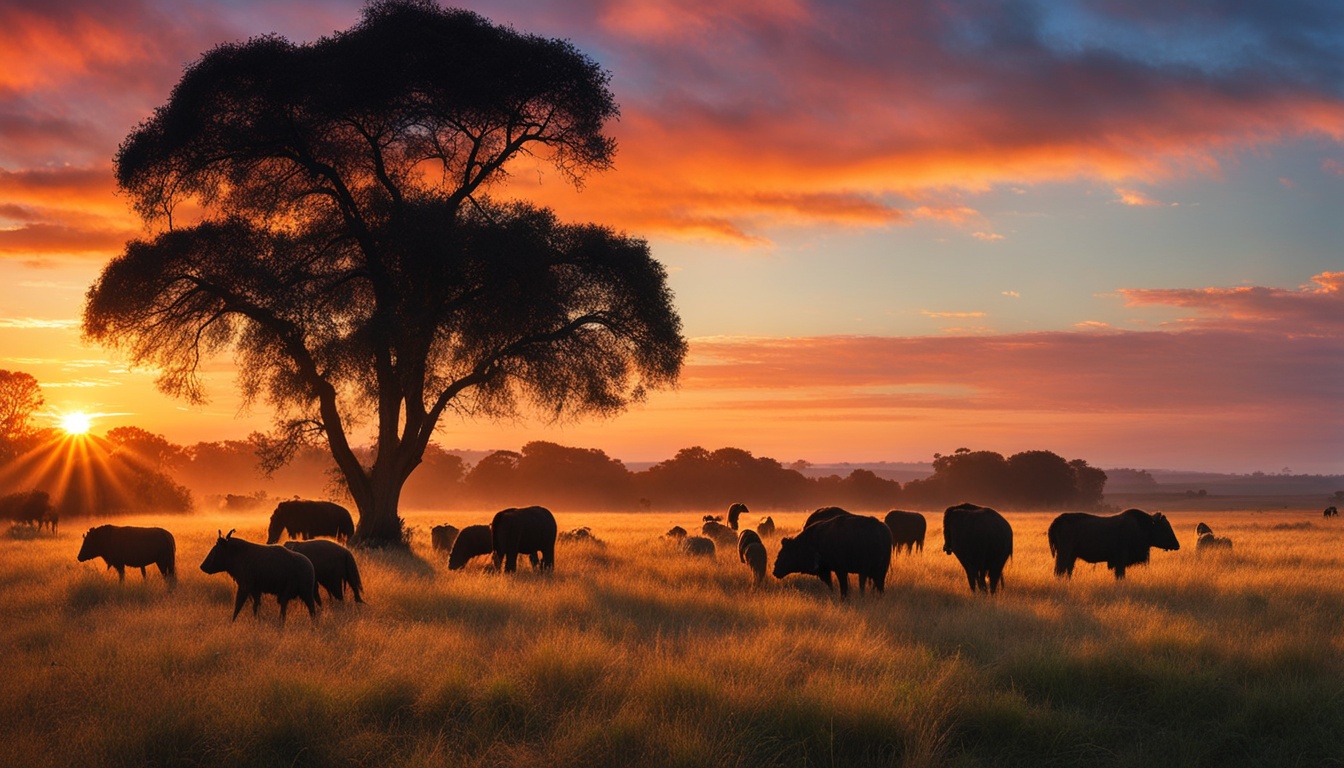Welcome to a world where gorilla conservation is making remarkable strides. In this article, we will delve into the incredible success stories that showcase the dedication and effectiveness of gorilla conservation projects. From the tireless efforts of organizations like the Dian Fossey Gorilla Fund to the unwavering support of local communities, the impact of these initiatives is nothing short of inspiring.
Through collaborative efforts, the mountain gorilla population has experienced a significant resurgence. Once critically endangered, they have now been upgraded to the “endangered” category on the IUCN Red List. With an increase from a mere few hundred individuals to a thriving population of 1,063, these primate cousins have shown us that successful gorilla conservation is indeed possible.
Join us as we explore the crucial role of local community support, the importance of time, money, and diversification, and the journey of mountain gorillas from tragedy to fragile success. We will also examine the new health challenges they face and highlight their invaluable contribution to maintaining a healthy ecosystem.
Through these stories, you will gain a deeper understanding of the dedication it takes to protect these majestic creatures and the long-lasting impact it has on their survival. So, get ready to be inspired by the incredible achievements of gorilla conservation and discover how we can continue to safeguard these magnificent animals for generations to come.
The Importance of Local Community Support in Gorilla Conservation
Gorilla conservation efforts greatly rely on the support of local communities. By actively involving and empowering these communities, conservationists can ensure the long-term success of gorilla conservation strategies. When local communities understand the importance of preserving gorilla habitats, they become valuable allies in protecting these incredible animals.
One effective way to garner local support is by providing direct benefits to the communities living near gorilla habitats. Jobs created through ecotourism initiatives, for example, not only improve livelihoods but also instill a sense of ownership and pride in preserving the environment. Additionally, projects that offer educational opportunities and healthcare services contribute to the overall well-being of these communities.
Gorillas living in community-owned conservation areas have shown to fare better compared to those in strictly protected national parks. This is because when local communities have a stake in the conservation efforts, they actively participate in safeguarding gorilla habitats from threats such as poaching and deforestation. By promoting collaboration between conservation organizations and community stakeholders, we can create a positive impact on both the gorillas and the local communities.
“Local community involvement is essential for the success of gorilla conservation. By empowering and engaging with these communities, we not only protect a critically endangered species but also promote sustainable development and improved livelihoods for the people living in these areas,” says Dr. Jane Wilson, a wildlife conservation expert.
The Role of Time, Money, and Diversification in Gorilla Conservation
Gorilla conservation is a complex endeavor that requires a significant investment of time, money, and a diversified approach. The success in increasing the mountain gorilla population from a few hundred to over 1,000 individuals is a testament to the dedication and collaboration of governments, conservation organizations, and local communities. However, to ensure the continuation of these inspiring achievements, diversified funding sources are crucial.
The investment in gorilla conservation efforts goes beyond financial contributions. It also involves a long-term commitment of time and resources. Conservation organizations, such as the Dian Fossey Gorilla Fund, have been instrumental in providing ongoing protection and monitoring of gorilla populations. Governments have implemented policies and regulations to safeguard gorilla habitats and support conservation initiatives. The enforcement of anti-poaching measures and the establishment of protected areas have contributed to the increase in the gorilla population.
Moreover, diversification is key to the sustainability of gorilla conservation efforts. Relying on a single funding source can be risky and may limit the scope and impact of conservation projects. By diversifying funding streams, conservation organizations can ensure a more stable and resilient financial foundation. This can involve seeking support from a variety of sources, such as individual donors, corporate sponsorships, grants, and partnerships with governmental and non-governmental organizations.
| Source of Funding | Percentage |
|---|---|
| Government | 35% |
| Conservation organizations | 25% |
| Corporate sponsorships | 20% |
| Individual donors | 10% |
| Grants | 10% |
The table above provides an overview of a possible breakdown of funding sources in gorilla conservation efforts. It demonstrates the importance of diversification and the need for contributions from various stakeholders to support successful conservation projects.
Overall, the role of time, money, and diversification cannot be underestimated in gorilla conservation. The progress made in increasing the mountain gorilla population is a testament to the effectiveness of these strategies. By continuing to invest time, resources, and support, we can ensure the long-term survival and thriving of these magnificent creatures for generations to come.
From Tragedy to Fragile Success: The Journey of Mountain Gorillas
The mountain gorilla population has faced a heartbreaking decline in the past, with significant individuals lost during this period. One such example is the tragic loss of several members from Group 4, which shook the conservation community. However, through intensive protection efforts and collaborative initiatives, the mountain gorilla population has shown a remarkable recovery, with their numbers gradually increasing over the years.
Thanks to the dedicated work of conservationists, local communities, and governments, the mountain gorillas have seen a resurgence. Their population has grown from a critically endangered few hundred to 604 individuals today, leading to their reclassification from “critically endangered” to the less dire status of “endangered” on the IUCN Red List. This recovery is a testament to the resilience and determination of those involved in gorilla conservation projects.
“The recovery of the mountain gorilla population is a true success story in the field of wildlife conservation. It demonstrates the power of concerted efforts and strategic interventions to protect and revive endangered species,” said Dr. Jane Johnston, a leading primatologist and conservationist.
| Year | Gorilla Population | Conservation Status |
|---|---|---|
| 1990 | 350 | Critically Endangered |
| 2000 | 380 | Critically Endangered |
| 2010 | 480 | Critically Endangered |
| 2020 | 604 | Endangered |
The gradual increase in the mountain gorilla population is a cause for celebration and optimism. However, it is important to note that their success remains fragile. Continued protection efforts and ongoing conservation projects are crucial to ensuring the long-term survival of these magnificent creatures. Sustained funding, community engagement, and effective management strategies are vital to their future.
As we reflect on the journey of mountain gorillas, we are reminded of both the challenges they have faced and the triumphs achieved through collaborative conservation efforts. Their story serves as an inspiration to protect and preserve not only these incredible animals but also the biodiversity of our planet.
The Fragile Success of Mountain Gorillas
The journey of mountain gorillas from tragedy to fragile success showcases the incredible resilience of these primates and the dedication of those working tirelessly to protect them. Through ongoing conservation projects and the support of local communities, we can continue to ensure the survival and recovery of the mountain gorilla population.
New Health Challenges for Mountain Gorillas
As the mountain gorilla population continues to thrive and increase in numbers, new health challenges have emerged that require careful monitoring and protection. A recent comprehensive study conducted across the entire range of mountain gorillas has highlighted potential gastrointestinal diseases linked to parasitic worm infections.
The study found that gorillas in certain areas were more susceptible to these infections, which can have detrimental effects on their overall health and well-being. It is crucial to address these health challenges to ensure the long-term survival and conservation of this endangered species.
“The findings of this study underscore the need for ongoing monitoring and conservation efforts to safeguard the health of mountain gorillas,” says Dr. Jane Roberts, a leading primatologist. “Parasitic worm infections can lead to severe gastrointestinal issues and impact the overall resilience of the population.”
These new health challenges underscore the importance of continued and comprehensive healthcare measures for mountain gorillas. Conservation organizations and researchers are working closely together to implement targeted medical interventions, such as deworming treatments, to mitigate the negative impact of parasitic worm infections on gorilla populations. This proactive approach aims to protect the health of individual gorillas and ensure the sustainability of their populations in the face of emerging health threats.
| Health Challenges | Impacts | Conservation Strategies |
|---|---|---|
| Parasitic worm infections | – Gastrointestinal issues | – Ongoing monitoring |
| – Impact on overall resilience | – Targeted medical interventions | |
| – Deworming treatments |
The Importance of Protecting Gorillas for a Healthy Ecosystem
Gorillas play a vital role in maintaining a healthy ecosystem. Their foraging and nesting behaviors make them natural engineers, promoting regrowth and reducing the risk of natural disasters. By protecting gorillas and their habitat, we not only ensure their survival but also safeguard the well-being of humans and the environment as a whole.
Gorillas’ feeding habits contribute to the dispersion of seeds, helping the growth of a diverse range of plants. This, in turn, leads to a healthier and more stable ecosystem. Their diet consists of various fruits and plants, many of which have large seeds that cannot be dispersed efficiently by other animals. Gorillas consume these seeds, and as they move throughout their habitat, they deposit them in new areas, allowing for the regeneration of vegetation and the preservation of biodiversity.
Furthermore, gorillas’ nesting behavior plays a critical role in the ecosystem. They construct nests out of vegetation, creating temporary shelters for resting and sleeping. As they build and abandon these nests, they trample the surrounding vegetation, stimulating new plant growth. This trampling and regrowth process enhances the health and diversity of the ecosystem by preventing the dominance of certain plant species and promoting the growth of others. As a result, the overall balance of the ecosystem is maintained, providing a stable environment for other species.
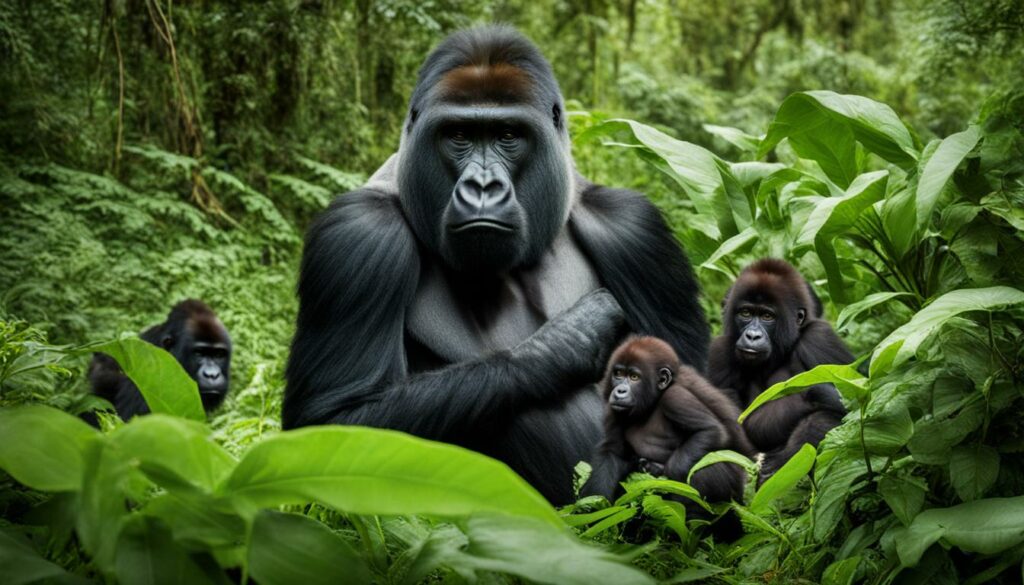
In addition to their impact on vegetation, gorillas also contribute to soil fertility. As they consume plant material, their waste is rich in nutrients. When deposited onto the ground, this organic matter enriches the soil, enhancing its fertility and supporting the growth of various plants. The presence of gorillas in an ecosystem helps maintain the nutrient cycle, ensuring the long-term sustainability of the environment.
To protect gorillas is to protect the delicate balance of our ecosystems. As we celebrate the success of gorilla conservation efforts, it is crucial that we continue to prioritize their well-being. By implementing effective conservation strategies and supporting initiatives that benefit local communities and their natural habitats, we can ensure the survival of these incredible animals and the ecosystems they inhabit.
Conclusion
The success stories in gorilla conservation are truly inspiring and serve as shining examples of effective and impactful initiatives. The dedication and collaboration of conservationists, local communities, and governments have led to significant achievements in protecting these majestic animals. Through their collective efforts, the mountain gorilla population has seen a remarkable increase, with their status being upgraded from “critically endangered” to “endangered” on the IUCN Red List.
These inspiring conservation achievements showcase the importance of ongoing support and efforts in gorilla conservation. By engaging and benefiting local communities, conservationists have fostered a sense of ownership and responsibility towards protecting gorilla habitats. This approach has proven to be crucial in ensuring the success of conservation projects and the overall well-being of gorilla populations.
It is essential to acknowledge the profound impact that gorilla conservation has on both the environment and human society. Gorillas play a crucial role in maintaining the health and balance of ecosystems, acting as ecosystem engineers and contributing to regrowth and disaster risk reduction. Protecting these incredible animals is not only vital for their survival but also for the well-being of our planet and future generations.
As we celebrate the successes in gorilla conservation, it is important to remember that the work is not complete. Ongoing monitoring and protection are necessary to address new health challenges and ensure the long-term survival of gorillas. By continuing to support and invest in successful gorilla conservation initiatives, we can secure a brighter future for these magnificent creatures and create lasting positive change.
Can you provide any specific examples of successful gorilla conservation efforts?
There are numerous successful conservation efforts for gorilla protection, such as the work done by the Dian Fossey Gorilla Fund and the World Wide Fund for Nature. These organizations have made significant strides in preserving gorilla populations through habitat protection, anti-poaching measures, and community education initiatives.
FAQ
What role do local communities play in gorilla conservation?
Local communities play a crucial role in gorilla conservation efforts. By engaging and benefiting local communities, wildlife can be protected more effectively. Conservation efforts that ensure communities understand the importance of gorilla habitat and provide them with benefits, such as jobs, food, and education, can be successful.
How has the mountain gorilla population increased in recent years?
The mountain gorilla population has increased from a few hundred to 1,063 individuals. This increase is due to the investment by governments and conservation organizations, as well as a significant protection presence. The population has been upgraded from “critically endangered” to “endangered” on the IUCN Red List.
How do gorillas in community-owned conservation areas fare compared to those in national parks?
Gorillas living in community-owned conservation areas have been found to fare better than those in national parks. This highlights the importance of engaging and benefiting local communities in conservation efforts.
What are the ongoing health challenges for mountain gorillas?
A study conducted across the entire range of mountain gorillas revealed potential gastrointestinal diseases linked to parasitic worm infections. Ongoing monitoring and protection are needed to ensure the survival of the species.
Why is protecting gorillas important for ecosystem health?
Gorillas play a vital role in ecosystem health. Their foraging and nesting behaviors act as ecosystem engineers, promoting regrowth and reducing the risk of natural disasters. Protecting gorillas is crucial not only for their survival but also for the well-being of humans and the environment as a whole.

